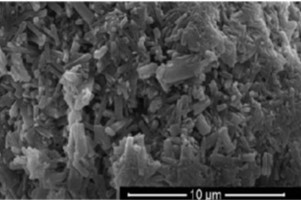Ethylcellulose Analysis Service
Unlocking the Potential of Ethylcellulose: Expert Analysis Services
Ethylcellulose is a polymer consisting of glucopyranose residues in which the units are linked by 1,4-β-glycosidic bonds. It is widely used in pharmaceutical and industrial applications for its non-toxicity, non-irritation, good thermal stability, good biocompatibility, and good film-forming properties. With advanced technology in the field of Pharmaceutical and Biological Analysis, CD BioGlyco provides high-quality ethylcellulose analysis services to clients.
- State
Ethylcellulose is a free-flowing white to light tan powder.
- Identification
The samples are tested by infrared spectroscopy, followed by a comparison of the obtained infrared spectrograms with those of the ethylcellulose standard.
- Content analysis
- Gas chromatography: In a high-temperature environment, we inject the sample to be measured into the gas chromatograph, calculate the peak area in the spectrum according to the internal standard method, and then get the content of ethylcellulose in the sample.
- Volumetric method: We add molten phenol, hydriodic acid, and bromine to the sample. After reacting for some time, we perform a titration using sodium thiosulfate. Finally, the amount of ethylcellulose in the sample is calculated based on the amount of sodium thiosulfate used.
- Viscosity analysis
The ethylcellulose to be tested is dissolved in a toluene-ethanol solution, and then we test the solution's efflux time using a specific viscometer. Finally, the viscosity of ethylcellulose is calculated based on the efflux time.
- Softening temperature analysis
We use a Tiller tube to test the softening temperature of ethylcellulose. To get more accurate results, we are going to perform several tests and take the average value.
- pH analysis
We place ethylcellulose in water and after filtration, phenolphthalein indicator solution and sodium hydroxide solution are added to the filtrate, and the whole solution appears pink in color (ethylcellulose is alkaline).
- Acetaldehyde content analysis
To the aqueous solution of the ethylcellulose sample and the aqueous solution of acetaldehyde, we add methylbenzothiazolone hydrazone hydrochloride solution and ferric chloride-sulfamic acid solution in turn. Then the colors of the aqueous solution of ethylcellulose and the aqueous solution of acetaldehyde are compared. If the colors are the same, it is proved that the sample of ethylcellulose contains acetaldehyde impurity.
- Loss on drying
We place the ethylcellulose samples in a high-temperature environment for the drying process and compare the weight difference of the ethylcellulose samples before and after drying.

In addition, due to the substitution of hydroxyl groups on the glucose unit of ethylcellulose, the number of hydrogen bonds that can be formed with water is reduced, so its water solubility is poor and it can be used as a polymer aqueous dispersion. Its aqueous dispersion exists in two special states:
- Ethylcellulose aqueous dispersion: Milky white suspension, containing the appropriate amount of cetyl alcohol and sodium dodecyl sulfate as a dispersant
- Ethylcellulose aqueous dispersion type B: Stable aqueous dispersion of ethyl cellulose, milky white suspension, stink-like ammonia
With extensive experience in Pharmaceutical Excipient Analysis, CD BioGlyco also provides clients with comprehensive analysis of ethylcellulose aqueous dispersions.
Publication Data
Technology: Scanning electron microscopy (SEM) technology
Journal: Materials
IF: 3.4
Published: 2019
Results: In this paper, the authors characterized ethylcellulose using SEM. The results showed that ethylcellulose contains 44-51% ethoxylate (-OC2H5) and consists of β-anhydroglucose units linked together by acetals. Moreover, ethylcellulose exhibits a high degree of stability in the pH range of 3-11, allowing it to be used in both acidic and basic mixtures. After a progression of experiments, the authors found that ethylcellulose also forms tough and stretchy films that remain flexible even at low temperatures. In addition, ethylcellulose can be present in different forms, such as powders or aqueous dispersions with different viscosity grades.
 Fig.1 SEM pictures of ethylcellulose powder. (Wasilewska & Winnicka, 2019)
Fig.1 SEM pictures of ethylcellulose powder. (Wasilewska & Winnicka, 2019)
Frequently Asked Questions
- How is ethylcellulose prepared?
Ethylcellulose is obtained by etherification of cellulose hydroxyl groups by replacing them with ethoxy groups. During this reaction, cellulose is dissolved in an aqueous sodium hydroxide solution and its molecular structure is degraded to give basic cellulose. Next, the basic cellulose reacts with the hydroxyl functional group of cellulose. Finally, when ethyl chloride gas is added to the reaction, the products ethylcellulose, sodium chloride, and water are obtained.
- What is the application of ethylcellulose?
- Since ethylcellulose is insoluble in water, it is employed mainly as a tablet binder and film coating material, etc. It is also used as a blocking agent in the preparation of various types of skeleton materials.
- Ethylcellulose can be used as a basic material for the solid lubrication of punched metal workpieces.
- In the radio industry, ethylcellulose is used as a high-grade insulating material, as well as a special film in protective coatings and as a toughness enhancer for plastics.
Advantages
- Our professional technical team with rich experience and knowledge in pharmaceutical excipient analysis provides high-quality, accurate, and reliable ethylcllulose analysis services.
- We provide custom ethylcllulose analysis solutions to meet the different analysis needs of our clients.
- Our service team consists of biologists and chemists who can continuously improve and optimize pharmaceutical excipient analysis methods to provide more accurate and efficient ethylcllulose analysis services.
With the world's leading biological and chemical technologies, CD BioGlyco provides accurate ethylcllulose analysis services to our clients. We have a team of professional scientists to help our clients analyze ethylcllulose with high efficiency and accuracy. Please feel free to contact us if you are interested in our pharmaceutical excipient analysis service, and our staff will reply to you promptly.
Reference
- Wasilewska, K.; Winnicka, K. Ethylcellulose-a pharmaceutical excipient with multidirectional application in drug dosage forms development. Materials. 2019, 12(20): 3386.
This service is for Research Use Only, not intended for any clinical use.




 Fig.1 SEM pictures of ethylcellulose powder. (Wasilewska & Winnicka, 2019)
Fig.1 SEM pictures of ethylcellulose powder. (Wasilewska & Winnicka, 2019)